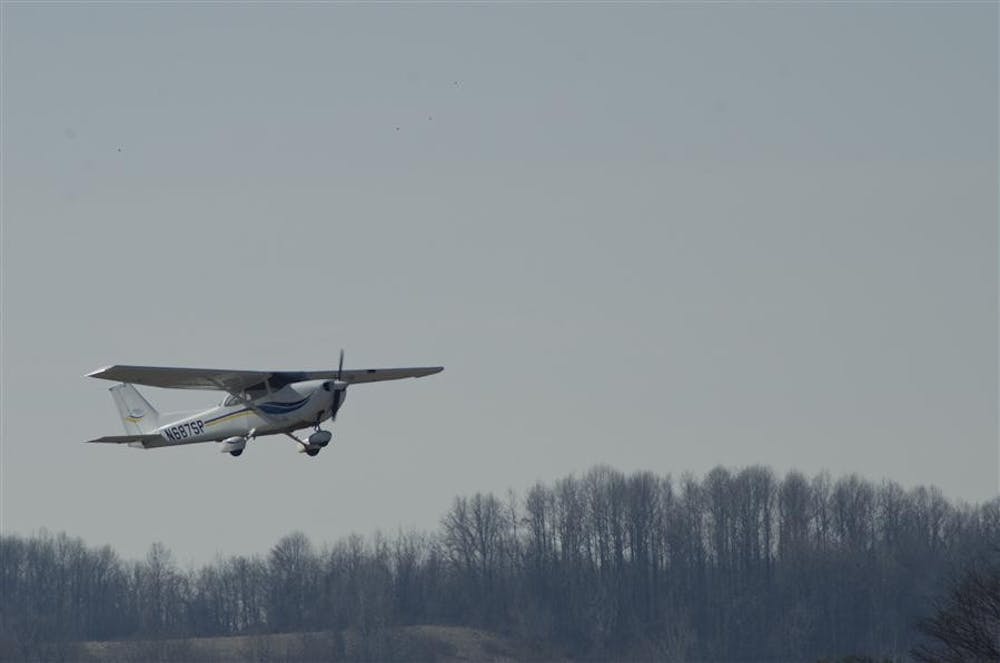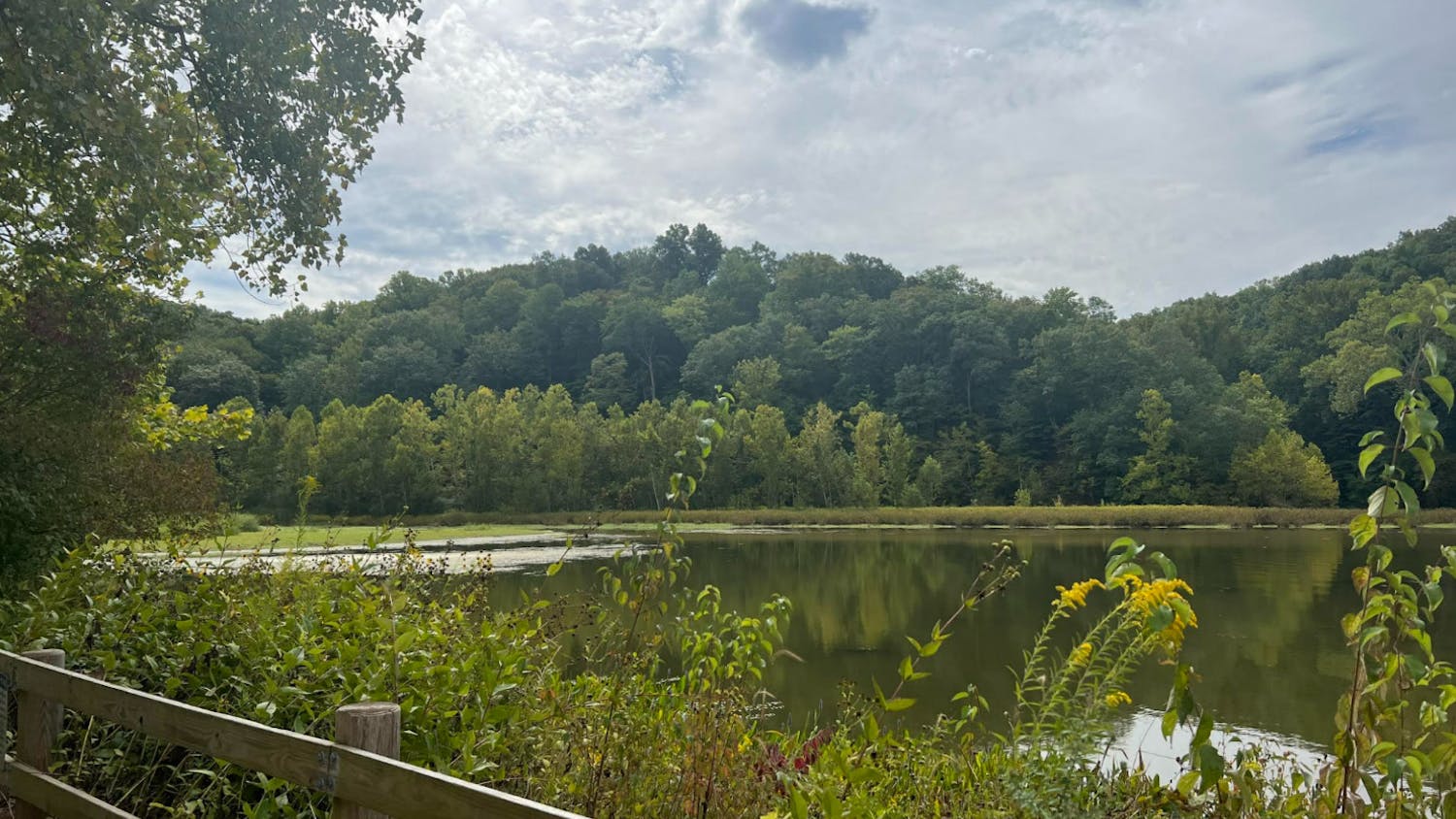The runway is quiet, save the caw of the birds circling overhead in the crisp winter wind.
A distant rumble.
Then, a roar.
The Cessna 172SP rips down the straightaway, gaining momentum, reaching speeds of 80 miles per hour.
Matt pulls back on the yoke, lifting the nose of the plane. Inch by inch, the wheels rise.
The 2,000-pound craft is airborne.
In minutes, the sight and sound of the plane are swallowed by the blue expanse of sky.
***
Two years and $10,000 ago, Matt Laherty, 41, could only dream of a flying license.
He’d flown before in friends’ planes and with his twin brother, who owns a personal aircraft, a Piper Cherokee.
But passing the Federal Aviation Administration test to earn his private pilot license was a goal he had yet to achieve.
“I’ve always wanted to fly,” Laherty said. “I decided to do it now before I retire.”
He is taking lessons at BMG Aviation, Bloomington’s only fixed-base operator at the Monroe County Airport. After 75 hours of flight instruction, Laherty has scheduled his final test for next week.
He said he’s feeling confident, a grin spreading beneath his scruffy beard. Even his
first time flying, he wasn’t nervous.
“For me, it was never scary,” he said. “Once you’re in the plane, your training kicks in.”
Laherty is just one of the 10 to 20 students instructor Joe Deckard teaches. Deckard has taught at BMG for five years since graduating from flight school and has flown
private planes around the country.
“It’s unlike anything else that you’ll ever do,” he said. “Unless you’ve done it, it’s hard to explain. Once you get hooked on it, though, that’s it. It’s over.”
He talks about the aircraft in BMG’s hanger with a sense of familiarity that shows his expertise.
“They’re just machines,” he said. “Unlike a car, you have to control a plane in three dimensions left, right, forward, up and down.”
He tilted a wooden airplane model to demonstrate.
As the plane moves down the runway, the pilot uses his feet to control the plane, which is called taxiing, he explained. In the air, it’s a combination of using the steering wheel, called a yoke, and the pedals, which together control the horizontal and vertical flaps.
Deckard has controls on his side of the plane as well — just in case.
“I can always relieve him of his command,” he said. “But you have to let them learn from their mistakes, too. I never let them go past the point where I can’t fix it.”
He said his students come from all walks of life.
“It ranges greatly from 15-year-old kids to, one time, I had a 67-year-old,” he said.
Some complete the minimum 40 hours in months, while others, like Laherty, might take several years.
“What happens is you really have to spend the time to understand the controls,” he said. “You have to go back and refresh your skills.”
You can’t go away for two months and come back and be in the same place you left off, he said. He wants to make sure he is going to pass the test when he takes it.
“It’s a big commitment, both in terms of time and money,” Laherty said.
BMG has been in business for more than a decade, manager Mary Beth Wampler said. She said about 30 people are in the flight program at any given time.
“Everyone from factory workers, to professors, to doctors,” she said. “Most do it just for fun.”
For Laherty, flying is for recreation. He said he considers one day taking his 11- and 9-year-old kids for a flight, but for now, it is just him in the sky.
“It’s very serene,” he said. “It’s very liberating.”
***
Not every day is a good day to fly, Deckard said, but Saturday morning dawned bright and clear.
“A day like today is great — it’s five knots straight down the runway,” he said.
The instructor and the student walked to the hanger, joking about how thankful they were to have heat in the Cessna 172SP that day.
Laherty performed the preflight check on the single-engine airplane, a process that has become second nature. He ducked beneath the wing to check the fuel and oil, then
the antennas, wing flaps and radial tires before moving to the interior.
Finally, the plane was deemed ready for flight.
Deckard rolled the hanger door open, the sunlight streaming in, illuminating the hanger and reflecting off Laherty’s sunglasses as he sat ready in the cockpit.
“He had to put on his sunglasses to look cool,” his instructor said, laughing.
They taxied down the runway, the black asphalt crisscrossed with the chalky tread marks of thousands of aircraft.
“November 498 Sierra Papa is ready for departure,” Laherty said into his headpiece.
The familiar response came over the airwaves.
“Cleared for take-off.”
Bloomington residents take flight
Bloomington residents soar at BMG Aviation, where learning takes on a higher meaning

Get stories like this in your inbox
Subscribe





